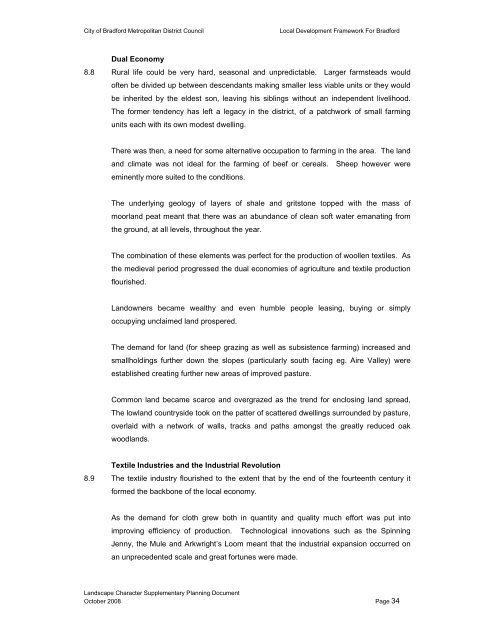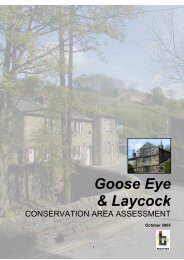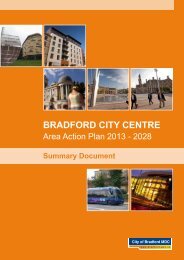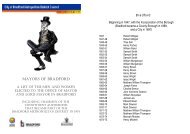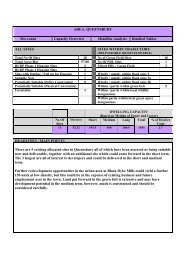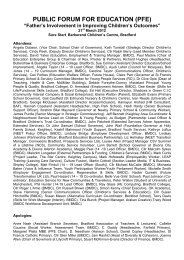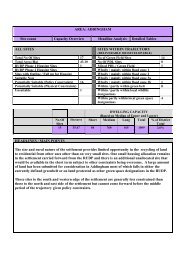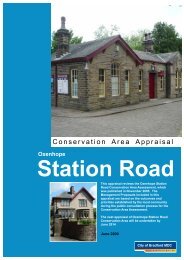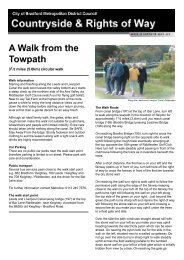Landscape Character Supplementary Planning Document ...
Landscape Character Supplementary Planning Document ...
Landscape Character Supplementary Planning Document ...
Create successful ePaper yourself
Turn your PDF publications into a flip-book with our unique Google optimized e-Paper software.
City of Bradford Metropolitan District CouncilLocal Development Framework For BradfordDual Economy8.8 Rural life could be very hard, seasonal and unpredictable. Larger farmsteads wouldoften be divided up between descendants making smaller less viable units or they wouldbe inherited by the eldest son, leaving his siblings without an independent livelihood.The former tendency has left a legacy in the district, of a patchwork of small farmingunits each with its own modest dwelling.There was then, a need for some alternative occupation to farming in the area. The landand climate was not ideal for the farming of beef or cereals. Sheep however wereeminently more suited to the conditions.The underlying geology of layers of shale and gritstone topped with the mass ofmoorland peat meant that there was an abundance of clean soft water emanating fromthe ground, at all levels, throughout the year.The combination of these elements was perfect for the production of woollen textiles. Asthe medieval period progressed the dual economies of agriculture and textile productionflourished.Landowners became wealthy and even humble people leasing, buying or simplyoccupying unclaimed land prospered.The demand for land (for sheep grazing as well as subsistence farming) increased andsmallholdings further down the slopes (particularly south facing eg. Aire Valley) wereestablished creating further new areas of improved pasture.Common land became scarce and overgrazed as the trend for enclosing land spread,The lowland countryside took on the patter of scattered dwellings surrounded by pasture,overlaid with a network of walls, tracks and paths amongst the greatly reduced oakwoodlands.Textile Industries and the Industrial Revolution8.9 The textile industry flourished to the extent that by the end of the fourteenth century itformed the backbone of the local economy.As the demand for cloth grew both in quantity and quality much effort was put intoimproving efficiency of production. Technological innovations such as the SpinningJenny, the Mule and Arkwright’s Loom meant that the industrial expansion occurred onan unprecedented scale and great fortunes were made.<strong>Landscape</strong> <strong>Character</strong> <strong>Supplementary</strong> <strong>Planning</strong> <strong>Document</strong>October 2008 Page 34


